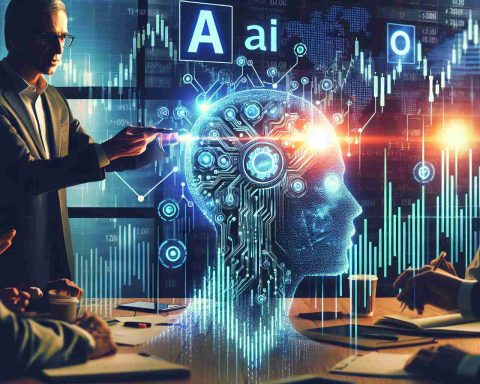A fresh report from ISACA has unveiled a startling oversight in the cyber domain: only 35% of cybersecurity experts are engaged in crafting AI usage policies within their organizations, while 45% have no role in AI development or deployment whatsoever. This revelation highlights a concerning disconnect between emerging AI technologies and their governance in cybersecurity.
The Role of AI in Cyber Defense
The study underscores that AI’s primary application lies in automating threat detection and response, accounting for 28% of its use. Other applications include endpoint security (27%), routine task automation (24%), and fraud detection (13%).
Integration is Key, Experts Urge
Jon Brandt, who oversees Professional Practices at ISACA, stresses the value of leveraging AI to ease cybersecurity workloads amidst talent shortages and intricate threat landscapes. He emphasizes the necessity for cybersecurity professionals to be integral to AI solution development and implementation within their organizations.
Transformative Resources and Training
In response, ISACA has rolled out strategic resources to aid professionals in embracing AI’s evolving landscape. A notable document deals with the European Union’s AI Act, outlining compliance requirements as it takes effect in August 2026. The organization also addresses deepfake verification, cautioning on AI-based authentication’s potential biases and ethical challenges.
To meet AI’s mounting challenges, ISACA introduces training and certification initiatives covering foundational to ethical aspects of AI. These programs aim to arm professionals with the competencies to navigate a swiftly changing tech environment. A new cybersecurity operations analyst certification is slated for early 2025, emphasizing technical skills for threat evaluation and countermeasure recommendation.
In the AI-cybersecurity landscape, opportunities and challenges abound. For effective protection of digital ecosystems, cybersecurity experts’ involvement across all stages—from development to implementation—remains imperative.
Maximizing Cybersecurity through Strategic AI Integration: Tips, Life Hacks, and Interesting Facts
The intersection of artificial intelligence and cybersecurity is increasingly crucial in today’s digital landscape. A recent report by ISACA highlights a disconnect in how AI is incorporated into cybersecurity strategies, with many experts not actively engaged in these processes. Understanding how to harness AI effectively can greatly enhance organizational security. Here are some practical tips and insights for navigating this evolving field.
1. Involve Cybersecurity Experts Early
A key takeaway from the ISACA report is the importance of involving cybersecurity professionals in AI policy development and deployment from the outset. By doing this, organizations can ensure that AI solutions are tailored to their specific security needs and that potential risks are identified and mitigated early on.
2. Leverage AI for Routine Tasks
AI is exceptionally well-suited for automating routine security tasks, such as threat detection and response. This not only improves efficiency but also allows cybersecurity teams to focus on more complex threats. Prioritizing AI implementations in areas like endpoint security and fraud detection can yield significant benefits.
3. Enhance Skills through Training
As AI continues to evolve, staying informed and skilled is essential. ISACA offers training and certification initiatives that cover both foundational and ethical aspects of AI. These programs are designed to equip cybersecurity professionals with the knowledge to handle emerging threats effectively. Consider pursuing certifications, such as the upcoming cybersecurity operations analyst certification, to enhance your expertise.
4. Stay Informed about Regulatory Compliance
AI regulations are rapidly evolving. For example, the European Union’s AI Act, which will be in effect by August 2026, outlines specific compliance requirements. Entities affected by these regulations should stay informed and prepare for compliance by consulting resources like those offered by ISACA.
5. Address Ethical Challenges
As AI-driven technologies, such as deepfakes, become more prevalent, it’s important to consider ethical implications. Developing and adhering to ethical guidelines can help organizations navigate the complex landscape of AI-related authentication and biases.
Interesting Fact:
Did you know that 28% of AI’s current application in cybersecurity is dedicated to automating threat detection and response? This highlights AI’s significant potential to revolutionize threat management by reducing reliance on human oversight and enabling faster response times.
In conclusion, the fusion of AI and cybersecurity offers promising opportunities but also presents notable challenges. For organizations looking to strengthen their digital defenses, involving cybersecurity experts, investing in skills development, and preparing for regulatory changes are vital steps. To explore further resources, certifications, and guidance, visit the official ISACA website.
















